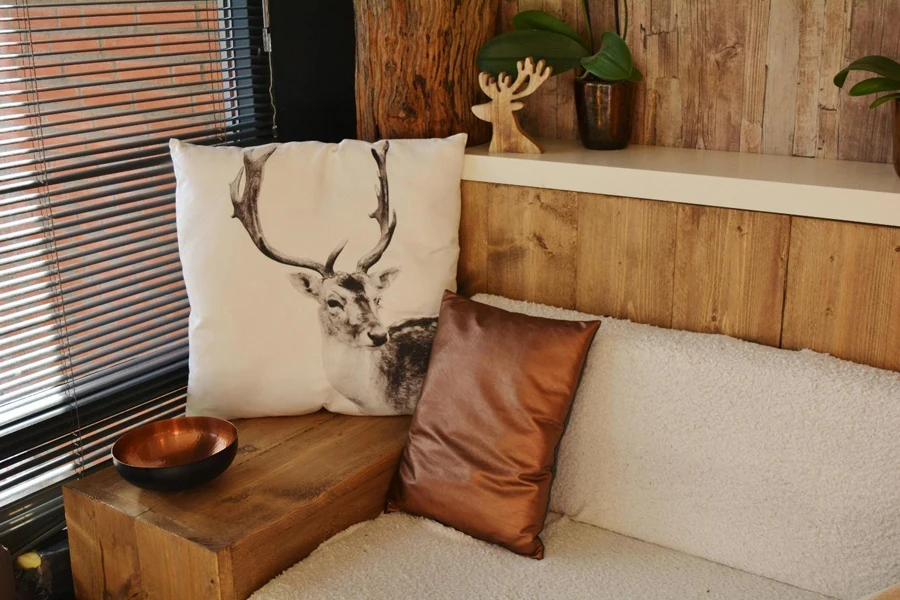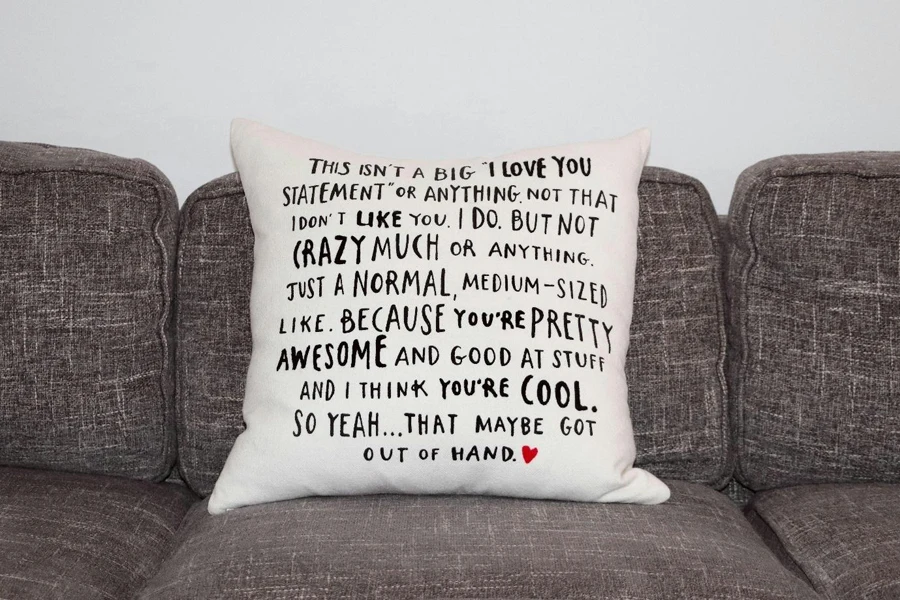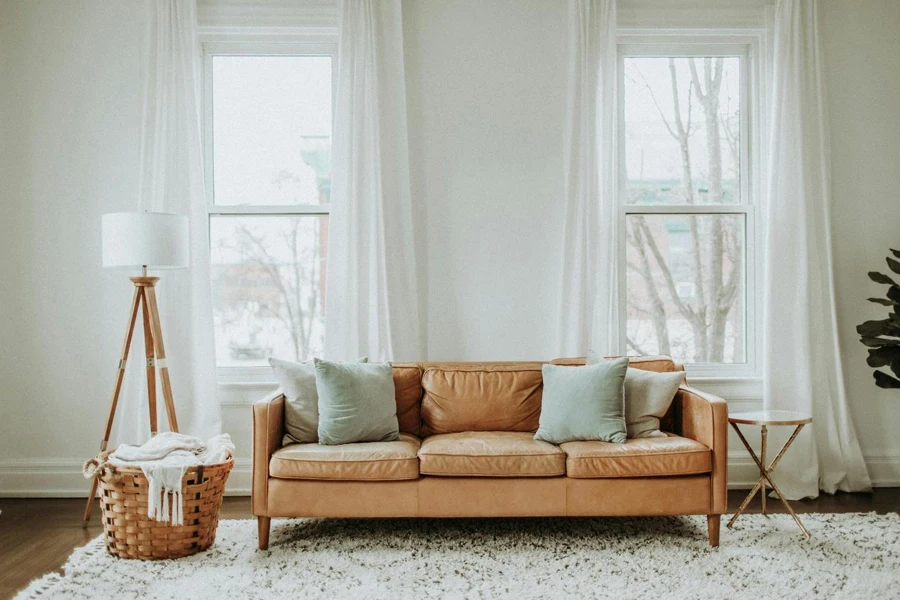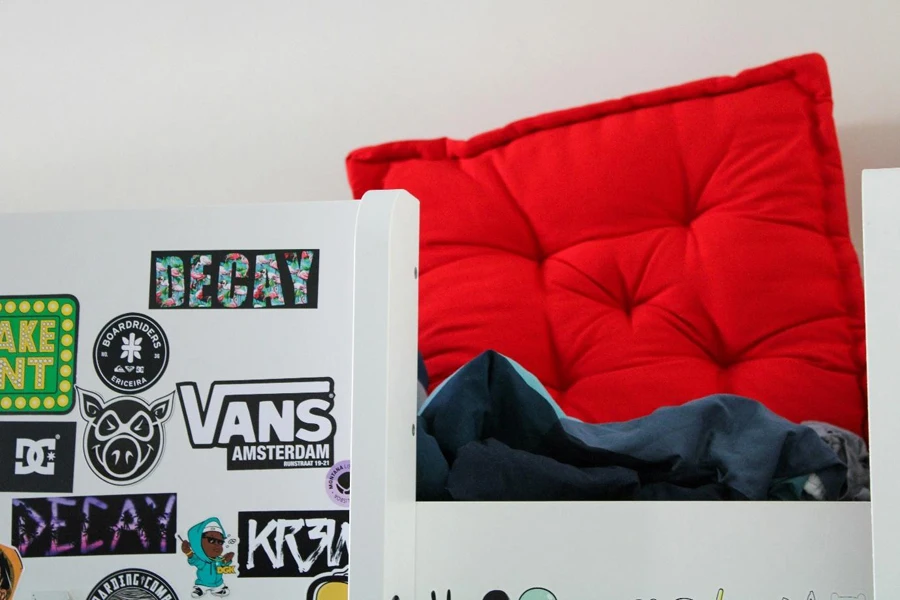Table of Contents
● Introduction
● Market overview
● Different types of cushions and their features
● Key considerations for selecting cushions
● Conclusion
Introduction

Over time, cushions have become more than just decorative items; they are now essential elements in homes and gardens that provide comfort and enhance the overall look of a space. With the increasing global demand for trendy cushion products, retailers need to stay updated on market trends and the different types of cushions available. Having a grasp of cushion materials, shapes, and design elements allows businesses to curate collections that align with what consumers are looking for these days. Retailers can take advantage of this growing market by placing products strategically and making informed purchasing decisions. Ensuring that products align with these perspectives helps meet the changing needs of consumers in the market.
Market overview

Global market scale
According to Market Research Futures projections, the worldwide pillow market is expected to hit USD 11.65 billion by 2032 with a growth rate (CAGR) of 7.23%. The surge is driven by the growing adoption of pillows for practical applications in homes and businesses. Customers are increasingly looking for greater comfort and aesthetic appeal, leading to a rise in demand for different types of pillows made from various materials. Moreover, advancements in the design and materials used for cushions, such as memory foam and weather fabrics, are playing a role in the market’s growth,
Regional insights
The cushion market is thriving in the Asia Pacific region thanks to its large population and urbanization trends that fuel the demand for home decor items like cushions. Moreover, the area serves as a center for cushion production, offering various products at attractive prices. On the other hand, emerging markets in the Middle East and Africa are experiencing growth opportunities driven by increasing disposable incomes and a growing passion for home embellishments. These regions are now key points for global cushion brands seeking to broaden their market reach.
Different types of cushions and their features

Indoor and outdoor cushions
Indoor and outdoor cushions vary greatly in their materials, and the purposes used for crafting them are quite distinct. Indoor cushions usually use breathable fabrics such as cotton and linen to offer a luxurious touch. Still, they can wear out quickly from regular use and sun exposure, so they need extra care to keep them in good shape over time. In contrast, outdoor cushions are made with fabrics like polyester, acrylic, and solution-dyed materials like Sunbrella, designed to withstand the tough elements efficiently. The materials are designed to withstand UV rays and prevent fading while also being coated with water treatments to avoid soaking up moisture. This makes them perfect for spaces that face constant exposure to the elements. Moreover, outdoor cushions are frequently treated with antimicrobial agents to prevent mold and mildew growth, ensuring their durability in humid weather conditions.
Core cushion types
Various kinds of pillows are created for specific purposes, and they come with technical features customized to improve their comfort and practicality. Throw pillows typically contain synthetic materials, like hollow fiber or microbeads, to offer a lightweight yet sturdy structure that stays its shape for a long time. Bolster pillows are usually filled with denser substances, such as polyurethane foam, to support the neck and back, making them well-suited for ergonomic use. Lower support cushions are typically made with memory foam or gel-infused foam to offer pressure relief and ensure proper spinal alignment for added comfort during extended periods of use.
Box cushions with gusseted sides are known for their voluminous appearance, making them great for seating applications. These box cushions are usually made with many layers of foam, with a denser bottom layer for support and a softer top layer for comfort. Floor cushions are bigger and commonly used for relaxed seating; they might combine foam and polyester fiberfill to balance soft and supportive. These pillows are made to last with stitching and tough zippers that can handle much moving around and use.
Shape and design influence
Cushion design and shape can affect how well it works in situations like custom furniture design. T-shaped cushions are created to fit perfectly against sofa and chair arms by having angled edges that match the furniture shape perfectly. These cushions usually have denser foam at the edges to keep them in shape and provide lasting support. Sectional furniture commonly includes L-shaped cushions with modular designs to adapt to seating arrangements by using zippers or Velcro attachments for stability.
When selecting colors and patterns, there are factors to consider for cushion design. For instance, outdoor cushions made with solution-dyed acrylic fabrics provide color retention since the dye is incorporated into the fibers during production, resulting in coloring throughout the fabric and durability against UV fading. Textured fabric like jacquard weaves or embroidered designs can enhance the visual appeal and touch experience. You might need extra care to avoid fraying and damage in busy spots.
Key Considerations for Selecting Cushions

Material and filling
Natural fibers
Natural fabrics, like cotton and wool, are commonly used for cushion covers because they are breathable and comfortable. Cotton is known for its softness and durability. It is great for daily use with a thread count between 200 and 400 for a nice balance of softness and strength. Linen has a luxurious feel and is good at wicking moisture, but it wrinkles easily and needs more care. Wool is known for its natural insulation and resilience, making it ideal for cushions intended for colder climates or settings requiring added warmth.
Synthetic materials
Fabrics made from materials such as polyester, acrylic, and nylon are popular due to their lasting nature and ability to resist stains and fading. Polyester fabrics typically have a rating ranging from 150 to 300, indicating a soft weave that works well indoors and outdoors. Acrylic fabrics are known for retaining color and resisting UV rays, making them ideal for cushions exposed to prolonged sunlight. Nylon offers durability against abrasions and maintains its elasticity, ensuring lasting performance in areas with high foot traffic.
Foam fillings
Foam fillings come in various densities measured in pounds per foot (PCFs), impacting the cushion’s firmness and support. High-density foam (2.5 to 3.0 PCFs ) gives robust support. Maintains its shape even with prolonged use. Great for seat cushions that need durability. Medium-density foam (ranging from 1.8 to 2.4 PCFs) strikes a balance between comfort and robust support and works well for back cushions and informal seating arrangements. Lightweight foam, with a density ranging from 1.2 to 1.7 PCF is softer and budget-friendly, though it might wear out quicker with regular use.
Feather and down fillings
Feather and down fillings deliver a plush, luxurious feel with excellent conformability. A common blend ratio is 85% feathers to 15% down, combining support with softness. The fill power, indicating the loft and insulation quality, typically ranges from 500 to 700 for cushion applications. To prevent feather poke-through and maintain hygiene, cushions should incorporate a down-proof ticking fabric with a tight weave of at least 233 threads per inch.
Hollow fiber fillings
Hollow fiber fillings made of polyester fibers offer lightweight padding and effective insulation properties. They are hypoallergenic and keep their fluffiness, making them suited for allergy-prone settings. The bounce back and durability of these fillings depend on the thickness and curl of the fibers – higher crimp enhances resilience and longevity.
Arrangement and placement
Symmetrical arrangement
Arranging cushions symmetrically can give your space a sense of balance and formality, which is great for both classic and minimalist styles. When you position matching cushions of the right size and shape on each side of a couch or bed—it brings that harmony to life. A common approach is to begin with the larger cushions (24 by 24 inches) placed at the back and then layer smaller ones (18 by 18 inches), creating depth and structure in your arrangement.
Asymmetrical arrangement
Asymmetrical arrangements bring a laid-back vibe that works well in diverse environments. Blending cushions of varying sizes, shapes, and textures add visual appeal and foster a cozy ambiance. When strategically positioning them, it’s important to harmonize colors and patterns throughout the seating area to ensure unity, especially with the lack of uniformity.
Layering techniques
Effective layering enhances both comfort and style by combining different cushion thicknesses and textures. Utilizing a combination of flat and overstuffed cushions can provide ergonomic support while adding dimensionality. Layering materials such as velvet, knit, and faux fur introduces tactile diversity, appealing to multiple senses and enriching the overall decor.
Functional placement
Considering the functional use of each space ensures cushion placement enhances comfort and usability. Incorporating lumbar and neck support cushions improves ergonomics for prolonged sitting in reading nooks. For outdoor settings, arranging water-resistant cushions on seating areas optimizes durability and comfort, with attention to securing them against wind and movement using ties or non-slip backing.
Color and pattern selection
Monochromatic schemes
Monochromatic color schemes employ various shades and tints of a single hue to create a sophisticated and cohesive look. Utilizing a dominant color, such as navy blue, and integrating lighter and darker variations adds depth and elegance without overwhelming the space. Texture variations within the same color family, like matte and sheen finishes, further enhance visual interest.
Complementary colors
Selecting colors opposite each other on the color wheel, such as teal and coral, introduces vibrant contrast and energy into the decor. Careful proportioning is essential; one color should dominate while the other acts as an accent to prevent visual clutter. Integrating neutral tones like grey or beige can balance and ground the contrasting colors.
Pattern mixing
Combining different patterns requires attention to scale and theme to achieve a harmonious look. Pairing a large-scale floral pattern with a smaller geometric design creates balance and prevents patterns from competing. Maintaining a consistent color palette across patterns ensures cohesion, even when mixing diverse motifs such as stripes, dots, and abstracts.
Seasonal adaptability
Selecting cushion colors and patterns that can be easily updated allows for seasonal decor changes. Incorporating removable covers with zippers enables quick swaps between warm, rich tones and heavier fabrics in winter to light, bright colors and breathable materials in summer. This adaptability enhances the versatility and longevity of cushion investments.
Conclusion

In a market where both aesthetics and function are important factors to consider, the choice of cushions is an essential knowledge that retailers need to grasp. Retailers who adapt their product lines to reflect market trends and advancements in materials while considering what consumers prefer will be able to meet various customer needs effectively. This will help them improve their standing in the market and boost sales.




